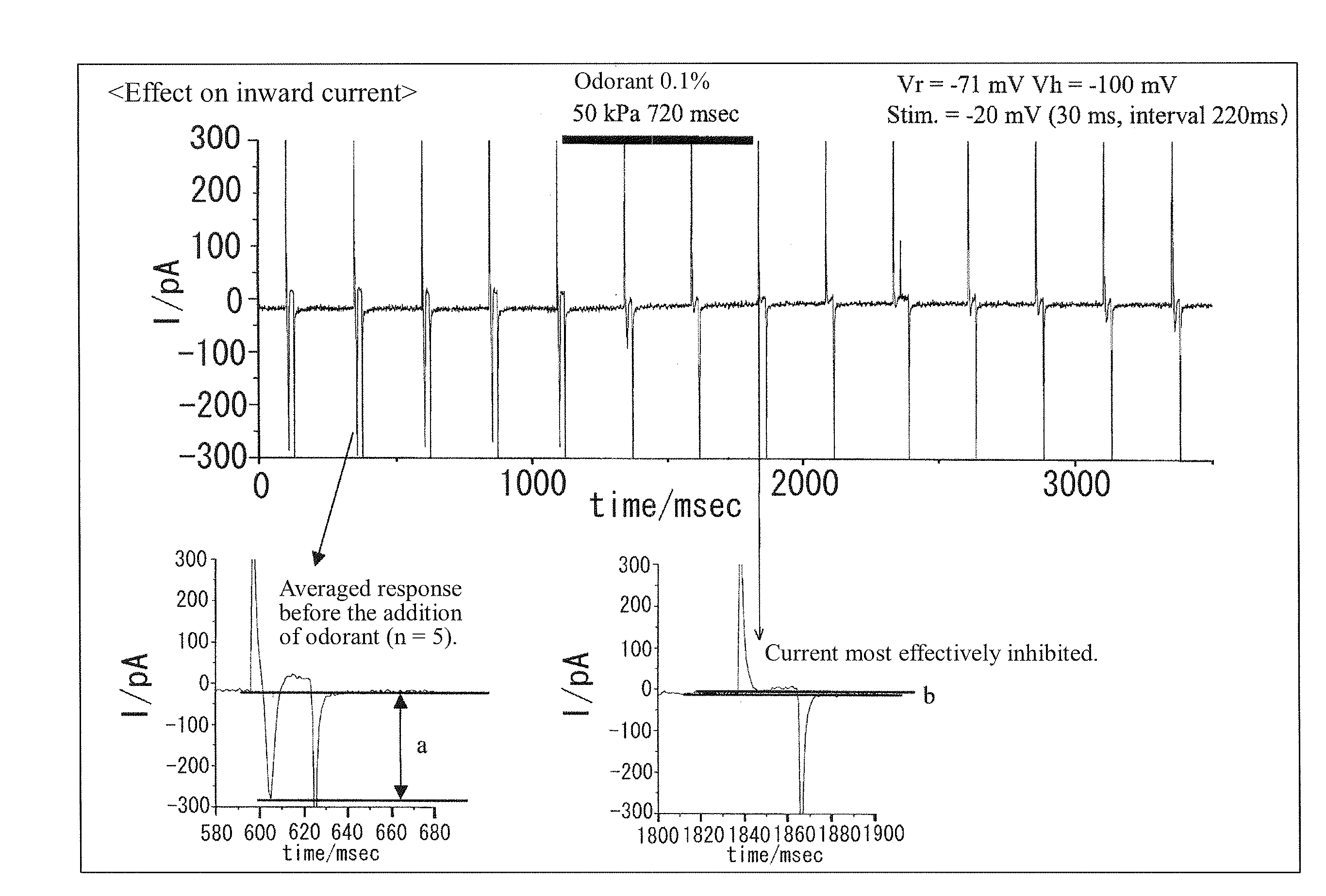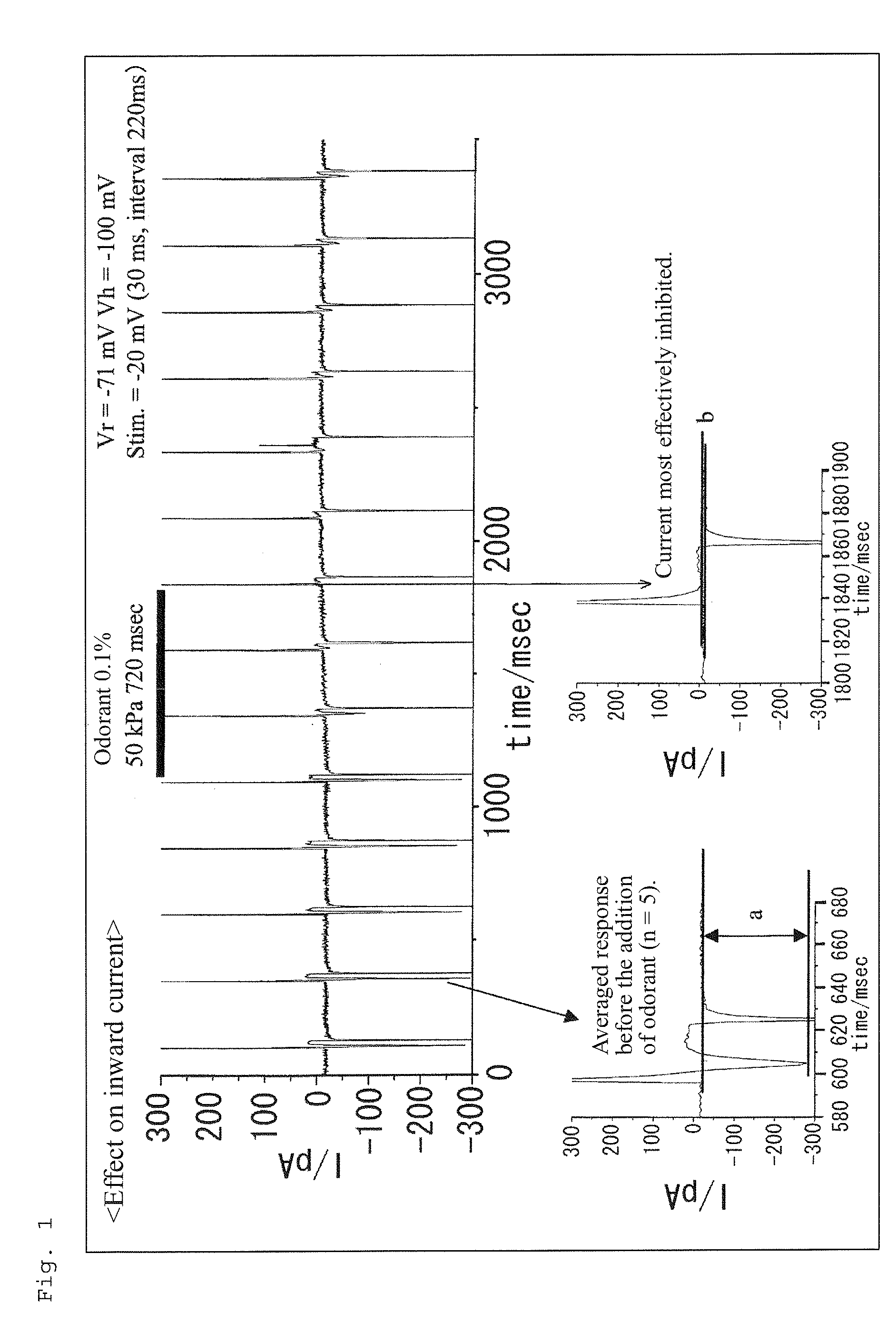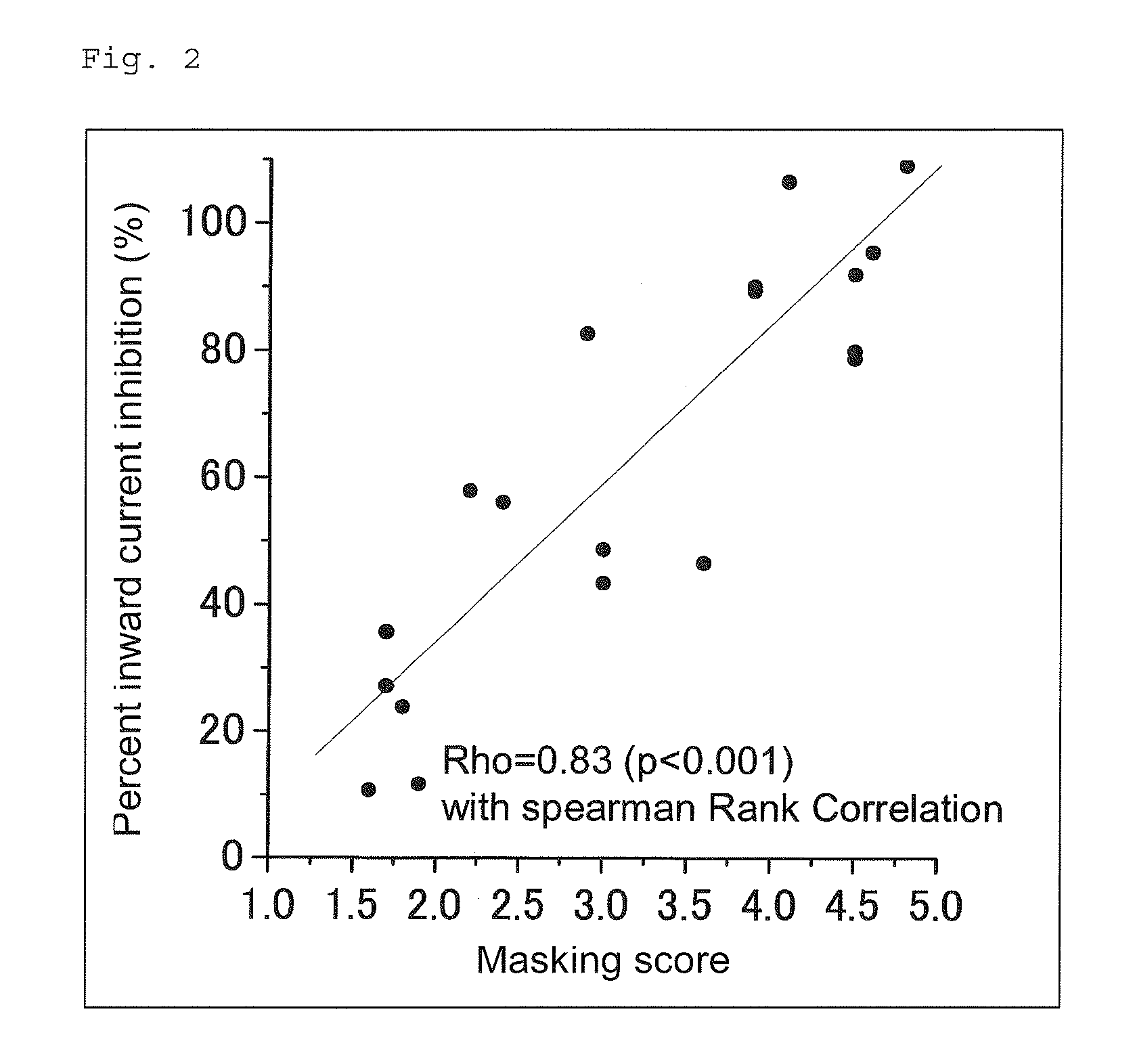Method for Screening Olfactory Sensibility Inhibitor
a technology of olfactory sensibility and inhibitor, which is applied in the direction of resistance/reactance/impedence, instruments, material analysis, etc., can solve the problem of no technique for verifying or objectively evaluating the aforementioned action, and achieve the effect of suppressing olfactory sensitivity
- Summary
- Abstract
- Description
- Claims
- Application Information
AI Technical Summary
Benefits of technology
Problems solved by technology
Method used
Image
Examples
example 1
1. Isolation of Olfactory Receptor Cells
[0048]Olfactory receptor cells were isolated from newts (Cynops pyrrhogaster) through a known method (Kurahashi et al., J. Physiol. (1989), 419: 177-192) and bathed in a normal Ringer's solution. More specifically, each newt which had been hibernated in ice-water was double-pithed, and the skull thereof was cut, to thereby remove the olfactory membrane. The removed olfactory membrane was incubated in 0.1% collagenase solution at 37° C. for five minutes. After washing off collagenase, the membrane tissue was broken by means of a glass pipette, to thereby isolate olfactory cells. The normal Ringer's solution had the following composition: NaCl 110 mM, KCl 3.7 mM, CaCl2 3 mM, MgCl2 1 mM, glucose 15 mM, sodium pyruvate 1 mM, HEPES 2 mM, and Phenol Red 0.001% (w / v), with a pH of 7.4 (adjusted with NaOH).
2. Measurement of Electrical Activity
A. Conditions
[0049]The membrane current of the isolated olfactory cells was recorded through the whole-cell re...
example 2
A. Procedure
[0053]An olfactory masking test based on sensory evaluation was performed with 20 specialists. Isovaleric acid (1%) was used as a malodorous substance, and each of the substances listed in Table 2 was employed as a masking material. The malodorous substance (2 μL) and each test substance (4 μl) were separately absorbed by cotton balls (diameter: 1 cm), and placed in each injection syringe (capacity: 50 mL) at room temperature for 12 hours to vaporized the substance therein. Both the vaporized malodorous substance and the vaporized test substance were injected into a PP bottle (capacity: 500 mL) with a cap and admixed in the bottle. In evaluation, each specialist slightly opened the cap of the PP bottle and smelled the odor in the bottle, whereby the masking score was determined. The masking score was evaluated by the following six criteria, based on the intensity of odor in a PP bottle to which only the malodorous substance had been added.
[0054]0: No masking effect
[0055]...
PUM
 Login to View More
Login to View More Abstract
Description
Claims
Application Information
 Login to View More
Login to View More - R&D
- Intellectual Property
- Life Sciences
- Materials
- Tech Scout
- Unparalleled Data Quality
- Higher Quality Content
- 60% Fewer Hallucinations
Browse by: Latest US Patents, China's latest patents, Technical Efficacy Thesaurus, Application Domain, Technology Topic, Popular Technical Reports.
© 2025 PatSnap. All rights reserved.Legal|Privacy policy|Modern Slavery Act Transparency Statement|Sitemap|About US| Contact US: help@patsnap.com



